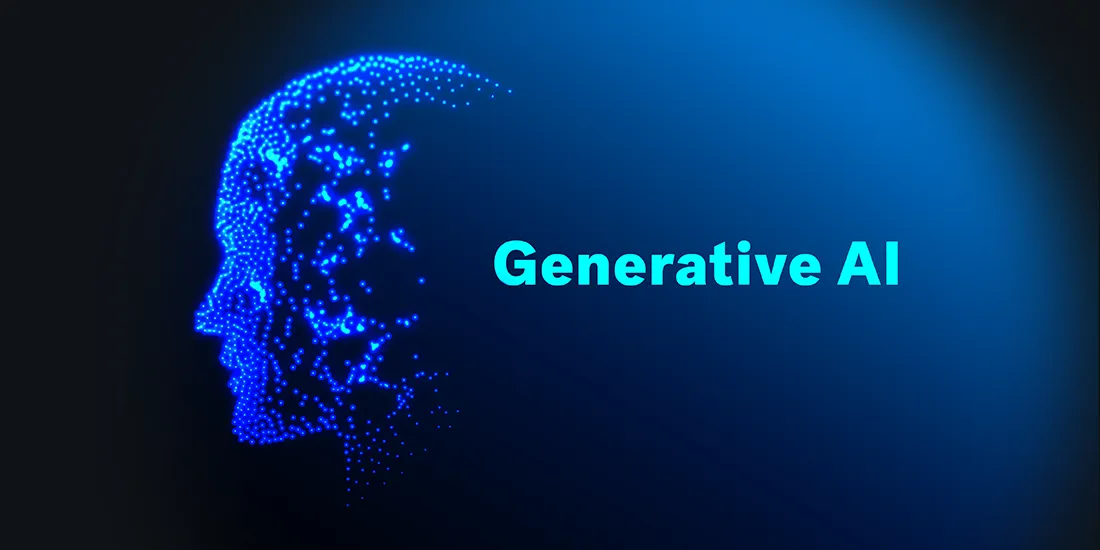Generative AI: A Comprehensive Guide
 Priya Sharma
Priya Sharma
Generative AI has become one of the most fascinating and revolutionary developments of our time in a society that is becoming more and more reliant on technology. Imagine a composer writing symphonies that combine many musical genres or a painter with an infinite canvas producing one of a kind masterpieces with each brushstroke. Similar principles underlie generative AI which uses the data it has been taught on to create new material such as writing graphics music or even code. The intricacies of generative AI its uses advantages and ethical issues are all covered in this guide.
What is Generative AI
Fundamentally algorithms that can produce new data instances that closely mirror the training data they were given are referred to as generative AI. Generative AI goes beyond standard AI which usually concentrates on pattern recognition and prediction by creating completely original outputs.
This can be anything from creating lifelike pictures and videos to writing text or creating music. Assume you own a sizable book collection. You could locate a given title or chapter summary using traditional AI. On the other hand generative AI might create a brand new narrative based on the themes and literary styles found in that library.
Key Technologies Behind Generative AI
Several technologies fuel the generative AI revolution but some of the most prominent include –
Generative Adversarial Networks (GANs) – GANs consist of two neural networks a generator and a discriminator that work against each other. The generator creates new data while the discriminator evaluates its authenticity. This adversarial relationship enables GANs to produce highly realistic content from photorealistic images to convincing deep fakes.
Transformers – Transformer models such as OpenAIs GPT (Generative Pre trained Transformer) have revolutionized natural language processing. They analyze vast amounts of text data learning context and relationships between words. As a result they can generate coherent and contextually relevant text making them invaluable for applications like chatbots content creation and more.
Variational Autoencoders (VAEs) – By discovering the underlying distribution of the training data, VAEs—an additional kind of neural network—are able to produce new data points. They are frequently employed for tasks like anomaly detection and picture production.
Applications of Generative AI
The versatility of generative AI has led to its adoption across various industries each reaping unique benefits –
Content Creation: Writers and marketers use generative AI to brainstorm ideas draft articles or generate social media posts. It is like having a co author that can provide inspiration and suggestions streamlining the creative process.
Art and Design – Artists can harness generative AI tools to explore new creative directions. For example platforms like DALL E allow users to create stunning visuals by simply inputting descriptive text transforming concepts into reality.
Music Composition – Musicians are increasingly collaborating with AI to produce unique tracks. By analyzing existing music patterns generative AI can compose new melodies blending genres and styles seamlessly.
Healthcare – In medicine generative AI can assist in drug discovery by simulating molecular structures and predicting their efficacy. This can expedite the development of new treatments offering hope to patients in need.
Benefits of Generative AI
Efficiency – Generative AI can significantly reduce the time spent on creative tasks. Whether drafting a marketing campaign or designing a product AI generated suggestions can expedite the process.
Innovation – By generating new ideas and concepts generative AI fosters innovation. It allows professionals to explore uncharted territories pushing the boundaries of what is possible in their respective fields.
Customization – Businesses can use generative AI to tailor products and services to individual preferences. For example fashion brands can create unique designs based on customer input ensuring a personalized experience.
Ethical Considerations
Like every other potent technology generative AI has its own set of moral conundrums. Discussions around the creation of deep fakes are centered on concerns regarding copyright infringement and the misuse of false information. Establishing policies and procedures that guarantee the responsible application of generative AI is essential for decision makers and business experts.
Final Thoughts
Generative AI and generative ai training course represents a leap forward in our technological capabilities offering immense potential across various sectors. By understanding its functionalities and applications students decision makers and professionals can better navigate this evolving landscape. Embracing the benefits of generative AI while being mindful of its ethical implications will shape the future of innovation and creativity. As we continue to explore this fascinating domain one thing is clear the canvas of possibilities is vast and the strokes of generative AI are only just beginning to color it.
Subscribe to my newsletter
Read articles from Priya Sharma directly inside your inbox. Subscribe to the newsletter, and don't miss out.
Written by

Priya Sharma
Priya Sharma
I am a developer and writer. I am dedicated to providing engaging and informative content to help individuals and organizations stay ahead in the ever-evolving tech landscape. With a strong background in software development and a passion for teaching, I have the skills and experience to break down complex technical concepts and make them accessible to a wide audience. I strive to make sure that my readers leave my blog or course with a deeper understanding of the topics I cover. and I am always looking for new ways to share my knowledge and help others succeed in their tech-related endeavors.